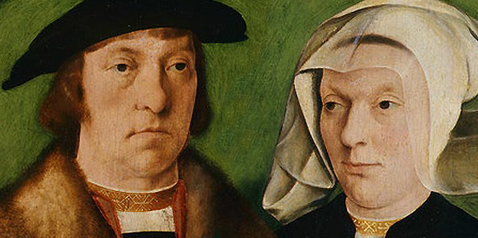
BARTHOLOMÄUS BRUYN (THE ELDER)
In 1533 Bartholomäus (or Barthel) Bruyn (the Elder) (Wesel (?) 1493 – 1555 Cologne) bought the very same pair of houses named ‘Zum alten Grin’/’Zum (kleinen) Karfunkel’ on the corner of Quatermarkt/In der Höhle which Stefan Lochner had acquired in 1444. As the building had been in the hands of painters in the meantime too, this purchase was both practical and symbolic: Bruyn was placing himself in a long and glorious artistic tradition.
From the point of view of art history, Barthel Bruyn did indeed take up the threads of late-medieval Cologne painting, for example by painting backgrounds for reliquaries produced by goldsmiths, or by transferring the kinetics of hinged altarpieces to the portrait diptych. But even though numerous large-format religious paintings were produced by his workshop, his reputation as Cologne’s most famous Renaissance painter is based above all on his subtle portraits of leading members of Cologne society.
Believed to have been born in Wesel in 1493, when Bruyn was about 14 he probably went as an apprentice to work at the workshop of the painter Jan Joest. There he probably met Joos van Cleve, who was his senior by some ten years. It was the start of a long friendship. It may be that Bruyn arrived in Cologne as early as 1512, but we have documentary evidence that he was elected to a committee of the city council in 1518. With his wife he had five children (including two sons who themselves became painters), to whom he transferred ownership of the houses in 1550. In 1555 he died as a respected city councillor.


